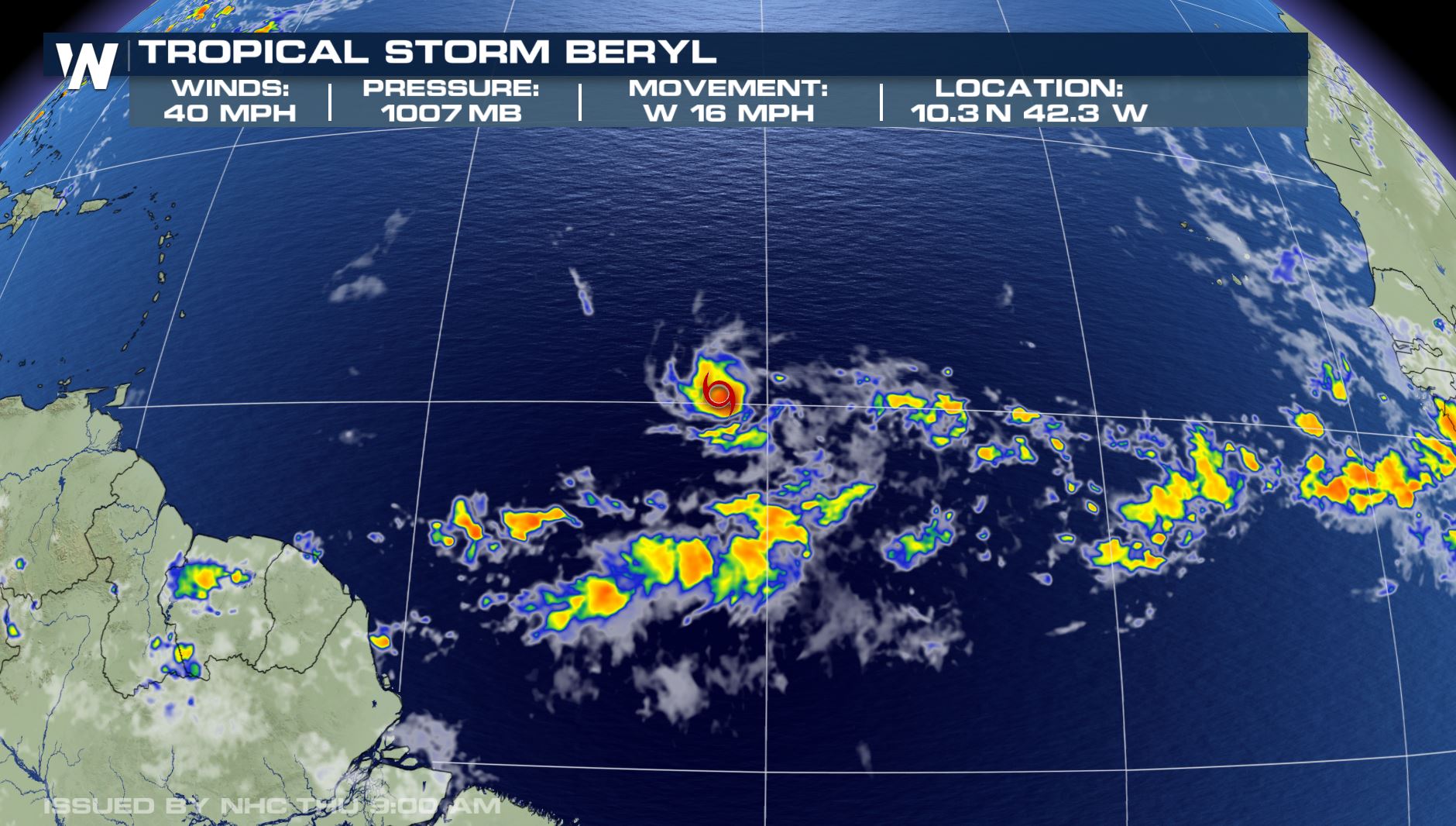Historical Overview of Storm Beryl: Storm Beryl Path

Storm beryl path – Storm Beryl was a tropical storm that formed in the Atlantic Ocean in July 2018. The storm developed from a tropical wave that moved off the coast of Africa and into the Atlantic Ocean. The wave gradually organized and strengthened, becoming a tropical depression on July 5th. The depression continued to strengthen, becoming a tropical storm on July 6th and receiving the name Beryl.
Storm Beryl don dey follow him path, and di latest hurricane beryl forecast say e go continue to move northwest. You fit check out di hurricane beryl forecast for more details on where e dey head and how strong e go be.
As Storm Beryl dey move, e important to stay alert and follow any instructions from local authorities.
Storm Beryl continued to intensify, reaching its peak intensity on July 8th with maximum sustained winds of 70 mph. The storm maintained this intensity for several days as it moved across the Atlantic Ocean. On July 10th, Beryl began to weaken as it approached the Lesser Antilles. The storm made landfall on the island of Dominica on July 11th, bringing heavy rain and wind to the island. Beryl continued to weaken as it moved through the Caribbean Sea, dissipating on July 13th.
Storm Beryl de on di move, and e path dey hard to predict. For di latest on Hurricane Beryl, check out dis hurricane beryl prediction. Di storm don already cause plenty damage, and e no dey clear yet how much more damage e go do.
Stay safe and keep an eye on di news for updates.
Projected Path and Impact Analysis

As Storm Beryl continues to develop, weather models and historical data are being used to predict its path and potential impact. Based on current projections, the storm is expected to move along the southeastern coast of the United States, bringing heavy rainfall, storm surge, and wind damage to coastal regions and inland communities.
Areas of Impact
The areas most likely to be affected by Storm Beryl include:
- Coastal regions from Florida to North Carolina
- Inland communities in Georgia, South Carolina, and North Carolina
- Transportation hubs, including airports, highways, and seaports
Potential Risks and Hazards, Storm beryl path
The potential risks and hazards associated with Storm Beryl include:
- Flooding: Heavy rainfall can lead to flash flooding, river flooding, and coastal flooding.
- Storm surge: Storm surge is a rise in sea level caused by the storm’s winds. It can cause flooding and damage to coastal property.
- Wind damage: High winds can cause damage to buildings, trees, and power lines.
Mitigation and Preparedness Strategies

Minimizing the impact of Storm Beryl requires comprehensive mitigation and preparedness strategies involving individuals, organizations, and government agencies. These measures encompass evacuation plans, coastal fortification, and emergency response protocols.
Effective coordination among government agencies, emergency responders, and communities is paramount. Each entity plays a crucial role in ensuring public safety and minimizing property damage.
Evacuation Plans
- Develop comprehensive evacuation plans that identify evacuation routes, shelters, and procedures.
- Educate the public about evacuation routes and procedures, ensuring they are well-informed and prepared.
- Conduct regular evacuation drills to test and refine plans, identifying areas for improvement.
Coastal Fortification
- Construct seawalls, breakwaters, and other coastal fortifications to protect vulnerable areas from storm surges.
- Implement beach nourishment programs to replenish sand and strengthen natural barriers against erosion.
- Consider using innovative technologies, such as artificial reefs and permeable pavements, to mitigate storm impacts.
Emergency Response Measures
- Establish emergency response teams with trained personnel and resources to respond to the storm’s aftermath.
- Pre-position emergency supplies, including food, water, and medical equipment, in strategic locations.
- Develop communication protocols to ensure timely and accurate information sharing among emergency responders and the public.
Key Actions for Individuals and Organizations
| Before the Storm | During the Storm | After the Storm |
|---|---|---|
|
|
|